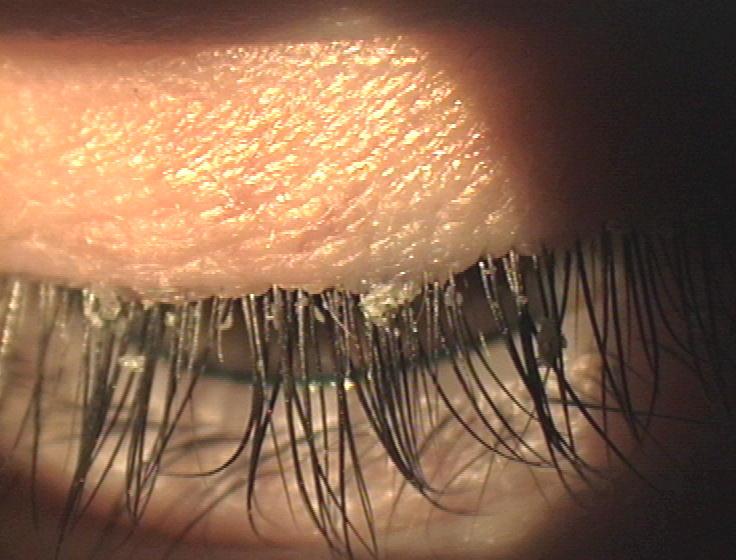Other common problems
The following are some other common problems that we often receive from
GPs requesting telephone advise. In
the majority of cases, these can be effectively managed by the GP.
Case 1
A patient's eyelids are stuck together from superglue. What should
I do?
Answer:
Superglue only sticks to dry surface. It is unlikely to sustain
any severe corneal damage.
Management:
-
The eyelids can be separated either by cutting the eyelashes (which the
patient may object) or by dissolving the glue with cooking oil. Examine
the cornea with fluorescein dye to make sure there is no corneal abrasion.
Case 2
A patient came to me with red eyes. The night before he had been to
a party and forgot to remove his contact lenses before going to bed. What
should I do?
Answer:
This is a case of contact lens overwear. The eyes are painful
due to lack of oxygen and superficial punctate stainings are common with
fluorescein dye.
Management:
-
Instill topical anaesthesia into the eyes to relieve the pain.
-
Patch the worse of the two eyes and prescribe analgesia.
-
The pain usually resolved within 24 hours.
Return to
the top
Case 3.
A patient lost her contact lens and think it is still somewhere in
the eye but could not remove it. What should I do?
Answer:
The most common site for the dislocated contact lens (assuming
that it is still in the eye) is the upper recess of the conjunctiva.
Any pain is likely to be the result of corneal abrasion arising from
removal attempts.
Management:
-
Instill anaesthesia if the patient is in pain
-
Inspect the conjunctival recesses, begin by everting the lower lid and
then the upper lid. Eversion of the upper lid is as looking for subtarsal
foreign body. Instruct the patient to look down and then evert the lid
against a cotton bud.
-
If the lens is found slide it into the cornea and get the patient to remove
it in her usual fashion.
-
If there were any pain, instill fluorescein dye and look for corneal abrasion.
If present, patching of the eye and topical antibiotic will be needed.
-
If the lens cannot be found, it is likely to have fallen out. But if the
patient still have foreign body sensation, refer to the eye casualty or
patient's own optician whichever is convenient.
Return to
the top
Case 4
A welder complains of painful eyes at night. He has been performing
welding earlier in the day without eyeshields for a short period. What
should I do?
Answer:
The most likely diagnosis is arc eye if both eyes are affected.
Otherwise, suspect corneal foreign body.
In arc eye, the cornea show punctate staining with fluorescein staining.
Management:
-
Instill topical anaesthesia
-
Inspect the cornea for any foreign body
-
Patch the worst of the two eyes and prescribe analgesia
Return to
the top
Case 5
A patient rang up early in the morning and complains of severe eye
pain in one eye on opening his eye upon waking. What should I do?
Answer:
The most likely diagnosis is recurrent corneal abrasion. The
patient is likely to have a history of corneal abrasion.
Management:
-
Instill anaesthesia.
-
Inspect the cornea after instilling fluorescein dye to confirm the diagnosis.
-
Patch the eye and prescribe topical antibiotic such as chloramphenicol.
-
The condition usually resolves within 24 hours.
Return to
the top
Case 6.
A patient of 60 year-old complain of chronic irritation in both eyes
with occasional sticky discharges in the morning. What should I do?
Answer:
Blepharitis is the most likely diagnosis. This is a condition
affecting the eyelids margin and is associated with abnormal function of
the glands lining the lids. Common signs are red and crusty lids (see figure
below). The condition is chronic.

Management:
-
Advise the patients to clean the eyelids. This is done by scrubbing the
lids with cotton bud dipped in warm water mixed with baby shampoo.
-
Artificial tear used at regular interval is useful to relieve the symptoms.
-
If the condition is severe or failed to respond to the above treatment,
refer to the eye casualty as the patients may benefit from a short course
of combined antibiotic and steroid treatment to the lids.
Return to
the top
